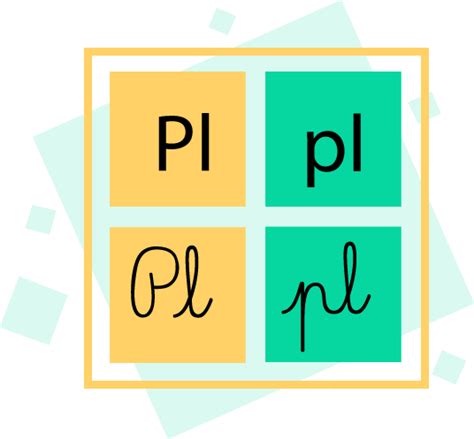
Effective PL Design Features
Effective professional learning (PL) hinges on several design features that contribute significantly to teacher development. One key feature is the integration of collaborative learning opportunities, allowing educators to share experiences and strategies. Research indicates that structured peer interactions can enhance understanding and foster a supportive environment. Additionally, the adaptability of PL programs to meet diverse teacher needs is crucial. Customizable content ensures relevance and engagement, empowering educators to apply new knowledge in their unique classroom settings.
Another critical design aspect involves ongoing assessment and feedback mechanisms that support continual improvement in teaching practices. These features not only provide valuable insights into the effectiveness of PL strategies but also encourage educators to reflect on their professional growth journey. The following table summarizes these effective design features:
| Design Feature | Description |
|---|---|
| Collaborative Learning Opportunities | Facilitates sharing of experiences among educators |
| Adaptability | Customizable content tailored to teacher needs |
| Ongoing Assessment | Continuous feedback loops for improvement |
By implementing these essential features, PL programs can significantly elevate teaching practices, thus creating enriched learning experiences for students. For additional insights on leadership strategies in education, explore the target CEO strategies for effective leadership in business growth. For more resources on product learning tools, consider visiting Sonus Faber PL 664and Sonus Faber PL 563.

Strategies for Teacher Growth
Effective professional learning (PL) strategies are essential for fostering teacher growth and enhancing their instructional practices. One approach to achieving this is through collaborative learning communities, where educators can share experiences and strategies that have proven successful in their classrooms. As noted by educational theorists, "Collaboration empowers teachers to learn from one another and cultivates a culture of continuous improvement." In addition, providing targeted coaching and mentorship can help teachers identify specific areas for growth, enabling personalized learning paths.
Teachers also benefit from ongoing professional development that emphasizes the application of new skills in real-world teaching contexts. This ensures that learning is relevant and transferable to the classroom environment. Furthermore, leveraging technology in PL initiatives allows educators to access a broader range of resources and collaborate with peers beyond their immediate surroundings. Integrating these strategies not only contributes to individual teacher efficacy but also promotes a more dynamic and responsive educational environment, ultimately benefiting student learning experiences.
For more information about education-related initiatives, refer to Premier League. Additionally, technology tools such as EZ-400 NMH PL-X Connectorscan facilitate the integration of new resources into professional development programs.

Improving Teaching Through PL
Professional learning (PL) serves as a crucial catalyst for enhancing teaching practices. By providing educators with opportunities to collaborate and engage in meaningful dialogue, PL strengthens their teaching repertoire and fosters a community of practice. Effective PL initiatives often incorporate peer observations and coaching, allowing teachers to gain insights into various instructional strategies. This collaborative environment not only supports personal growth but also encourages sharing of best practices among educators. Furthermore, research indicates that sustained engagement in PL is linked to increased student achievement, as teachers implement new methods that cater to diverse learning needs. For instance, resources from Pacing Musiccan serve as innovative tools that enrich classroom experiences. Additionally, understanding the funding frameworks associated with initiatives such as the Infrastructure Investment and Jobs Actcan support schools in designing impactful PL programs that prioritize teacher development and student outcomes.
Maximizing Teacher Learning Impact
To maximize the impact of professional learning (PL) on teachers, it is essential to create a supportive environment that encourages collaboration and continuous improvement. Effective PL programs invest in opportunities for teachers to observe one another, share feedback, and engage in meaningful discussions about teaching practices. Utilizing peer coaching models can be instrumental in this process, as they allow educators to learn from one another’s strengths and challenges. Furthermore, aligning PL activities with teachers’ specific needs and student learning goals ensures that the knowledge gained is relevant and applicable. Research indicates that enhancing teacher efficacy directly correlates with improved student outcomes; therefore, initiatives that focus on active engagement within professional learning experiences are vital. For more insights on building successful PL strategies, check out additional resources like Building Better PLand Planet.
Designing Effective PL Programs
Creating effective professional learning (PL) programs requires a thoughtful approach to design that considers the diverse needs of educators. Programs should integrate collaborative elements, allowing teachers to engage in meaningful dialogue and share best practices. By incorporating flexible learning formats—such as workshops, peer coaching, and online modules—educators can tailor their experiences to fit their schedules and learning styles. Evidence-based practices, reflecting the latest research in pedagogy, can enhance these programs further by ensuring the content is relevant and impactful. Additionally, structuring PL programs to include ongoing support and feedback will help sustain teacher engagement and bolster the application of new skills in the classroom. Consequently, this comprehensive design framework not only fosters professional growth but also ultimately enhances student experiences through improved teaching practices. For further insights into effective strategies in professional learning, resources can be explored hereand here.
Elements of Successful PL Initiatives
Successful professional learning (PL) initiatives are characterized by several key elements that contribute to their effectiveness. First, a clear alignment with teachers’ needs and goals is essential; this requires ongoing assessments of both instructional practices and student outcomes. Next, collaborative learning environments are vital, as they allow educators to engage in meaningful discussions and share best practices with peers. Furthermore, providing ongoing support through coaching and mentoring helps sustain momentum over time. The use of diverse learning modalities—such as workshops, online resources, and hands-on experiences—also enhances engagement by catering to different learning styles. Lastly, incorporating feedback mechanisms allows for continuous improvement of PL initiatives, ensuring that they remain relevant and impactful in fostering teacher development. By integrating these elements thoughtfully, PL programs can significantly contribute to enhancing both teaching practices and student experiences.
Enhancing Student Experiences via PL
Professional learning (PL) for teachers not only impacts their growth but also significantly enriches student experiences. When educators engage in effective PL strategies, they gain insights into innovative teaching methodologies and classroom practices that directly benefit their students. This continuous learning allows teachers to adapt and design interactive lessons, foster inclusive learning environments, and address diverse student needs. As teachers apply their newfound skills, students become more engaged and motivated in their learning journeys. Moreover, collaborative PL initiatives encourage a culture of sharing best practices among educators, leading to a collective enhancement of instructional quality. By prioritizing professional learning that focuses on student outcomes, schools can create a dynamic educational atmosphere where both teachers and students thrive together.
Research-Backed PL Outcomes
Research highlights the significant impact that professional learning (PL) can have on teachers and their instructional practices. Studies have shown that effective PL programs lead to enhanced teaching strategies, increased confidence among educators, and greater student engagement. For instance, when teachers participate in collaborative learning communities, they report a deeper understanding of pedagogical concepts and improved ability to implement innovative practices in their classrooms. Moreover, data indicates that these outcomes are particularly pronounced when PL is tailored to meet the specific needs of educators within their unique contexts. By aligning professional development initiatives with teachers’ goals and student needs, schools can create an environment where continuous improvement is not only encouraged but also achieved. This targeted approach fosters a culture of learning that resonates throughout the entire educational experience, ultimately benefiting both teachers and students alike.